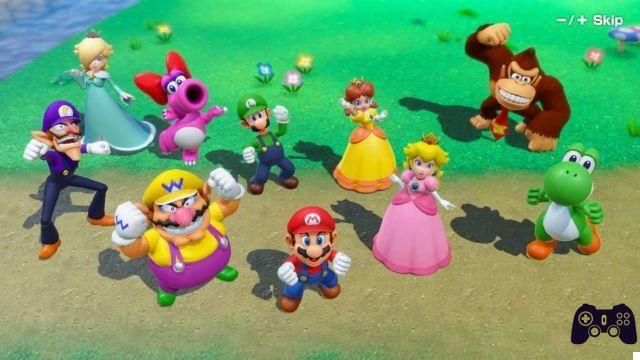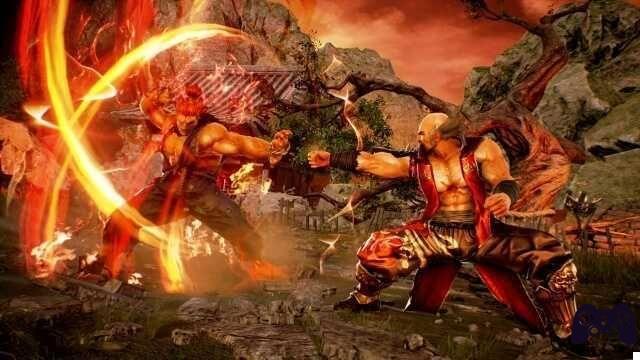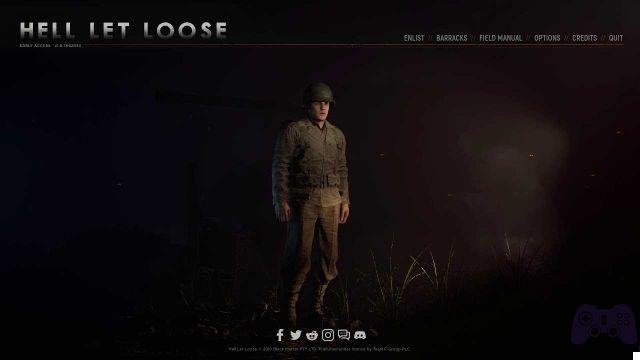Welcome back to Episode 17 of our in-depth guide to Super Smash Bros. Ultimate's stellar cast of playable characters
In this ours guide, we will devote ourselves to the many characters playable of Super Smash Bros. Ultimate, starting with Mario up to the latest additions of the second Fighters Pass. In each episode we will describe about five or six fighters, however, dividing them according to the chapter of Smash in which they made their debut. Today the cast of the game ends definitively, with the last three (or rather, four) characters of the second Fighters Pass. Let's talk about Pyra, Mythra, Kazuya e Sora, which we did not know in the last episode. Following this address you can find the summary in which we report all the others. In the appendix, we will talk about the special directional attacks.
Quick Preamble
Before moving on to the characters, let's clarify the fulcrum of the guide: in Super Smash Bros. Ultimate the task of each player is to throw opponents off the screen, fighting in arenas that mix the genre of fighting with elements of platformer (X and Y allow you to jump). The A and B keys, used in combination with the various directions, give life to the most disparate moves, as well as the back keys to manage shields, dodges and holds. The game also implements tools that irremediably alter the fate of each encounter, but in this guide we will basically focus only and only on the characters themselves. Increasing the opponent's damage will make him lighter and, therefore, vulnerable.
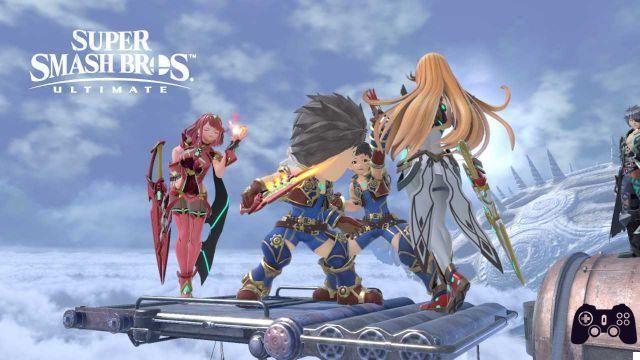
Pyra and Mythtra - Super Smash Bros. Ultimate Character Guide
To play an openly promotional role among the characters of the second Fighters Pass, after Byleth, were Pyra and Mythra, who will lead the way at the conclusion of our guide to Super Smash Bros. Ultimate. Their introductory trailer doesn't fail to make fun of what the protagonist of Xenoblade Chronicles 2, Rex, was among the characters most predicted by players. Rex is featured in the game as a costume for the Mii Swordsmen (image) included with the first Fighters Pass, as well as in character taunts. We will see them in groups and individually.
- Availability: Pyra and Mythra are available with the scenario Alrest Sea of Clouds (image) for six euros. If you buy in bulk in the Fighters Pass vol. 2 which also contains Min Min, Steve, Sephiroth, Kazuya and Sora, the total cost of 30 € allows you to save one euro for each fighter.
- Franchise of origin: Xenoblade
- Gameplay: Since we have split the character, we will skip the “Origins” entry (for now) and focus on the one special move in common. The one down (↓ + B) is called Passa a Mythra for Pyra, while the Mythra variant is Passa a Pyra. The change, in comparison to the dualism between Zelda and Sheik in Melee and especially in Brawl, is lightning: This dual character rewards the most versatile players the most. The constant exchange can greatly disorient the opponents, but the two do not shine for their recoveries. The poorest, for which it is best to be on the lookout, is Mythra's. Always switch to Pyra if you have to return to the scenario.
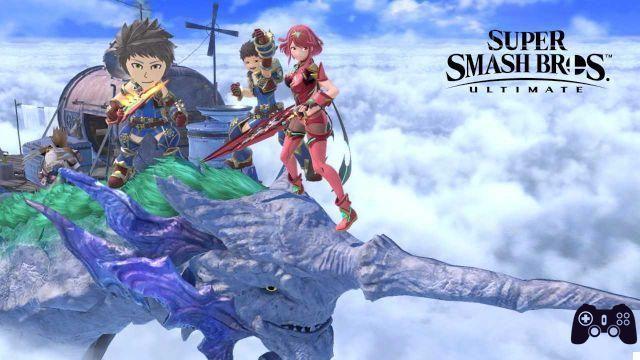
Pyra - Super Smash Bros. Ultimate Character Guide
The first of the two, Pyra, is the strongest in attack. Aggressive play with her can be brutal to any opponent who is unlucky enough to be up against her, but she is also slower. Ironically, as we have anticipated, it is also the most suitable for returning to the field. The ideal is to make the most of Mythra's agility (we'll get to that) to increase the opponent's damage. Alternating between them, you will be able to return to Pyra to conclude with its devastating Smash attacks.
- Origins: Pyra is a Gladius, a humanoid life form and personification of weapons in the world of Alrest. They are born as Nucleic crystals and, thanks to a process called Resonance, theirs leader: (a kind of mixture between master and guardian) can evoke the human form. Rex, the discarded character in question is the Ductor of Pyra, as indicated by the sword wielded by the relevant Mii costume (image). Pyra is one of two legendary Gladius called Aegis, and is found during an expedition by the treasure hunter Rex. In saving his life from a deadly stab, Pyra makes Rex her Ductor.
- Gameplay: What we have said about Pyra is reflected in her fighting style, particularly in her devastating Smash attacks. Fire Nova (B) is a whirlwind of… well, fire, which can be charged by holding the button down to increase the blows inflicted on opponents who become trapped. Incendiary ending (↔ + B) allows Pyra to throw her sword like a boomerang (managing distance with ↔ on the left analog stick), but until the weapon is returned to her hand she cannot attack. Harsh revolt (↑ + B) consists of an attack with an arc trajectory, with a jump and a violent swoop, halfway between the Super Jump Dedede and the Aether of Ike. Great for attacking, but dangerous for returning to the pitch. As we will see at the end of the article, it is obviously directionable (↔).
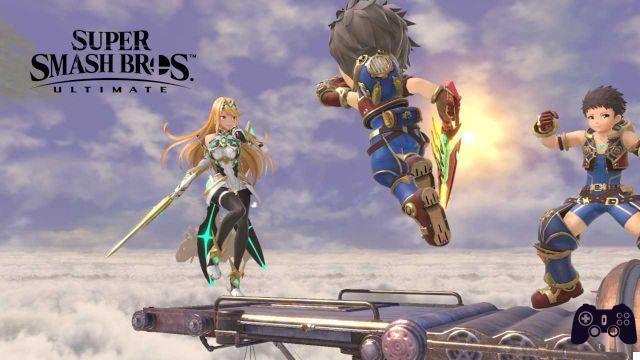
Mythra - Super Smash Bros. Ultimate Character Guide
Pyra's alter ego has increased our character count in the Super Smash Bros. Ultimate guide. The most superficial memes have focused on the character design, ahem, bursting with Mythra and its counterpart (due to the resume of designer Masatsugu "Saitom" Saito), but his contribution to the cast of Smash consists in the reintroduction of a double character after what has been seen in the past with Zelda and Sheik.
- Origins: Technically, it is Pyra who is Mythra's alter ego, and not the other way around. After committing actions that painfully marked her, Mythra repressed her stoic, resolute and authoritarian personality to turn in the determined as well as meek and friendly Pyra.
- Gameplay: Mythra replaces Pyra's affinity with the element of fire for the whiteness of light, and her swiftness in attacks proves this. In other words, he is more agile than Pyra but also more puny in defense and throwing power. Lightning Destroyer (B) allows you to charge an attack which, when released, results in a blast of slashing. Photonic shot (↔ + B) throws it forward with an attack almost impossible to avoid, but intercepted with a projectile to the detriment of the illusion of lightning movement. The move does not cause it to fall off an edge if Mythra is on a platform, but using the move to re-enter the field (thanks to the horizontal reach) requires a good strategy: in the air, the move leaves the character helpless until landing . It certainly is a better recovery move than Punishing beam (↑+B) e Chrome powder (↑ + B, pressing B again), which allows Mythra a third jump and then hurls a bullet (beam) or more (dust) downward, however, leaving her equally helpless. The skill Foresight slows the enemy hitting her just before she dodges (Shield + direction).
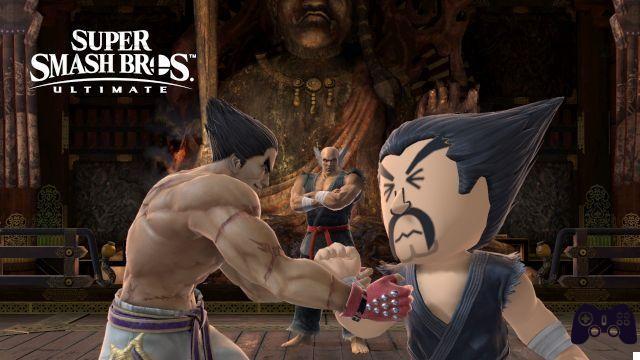
Kazuya - Super Smash Bros. Ultimate Character Guide
After Street Fighter with Ryu and Ken and Fatal Fury with Terry Bogard, he was just missing Tekken (okay, Mortal Kombat too, but it will be for another Smash) and the surprise rep is none other than Kazuya Mishima. It makes sense: after all, his father Heihachi has replaced him as an ambassador in crossover projects (like the Sony equivalent of Smash, the ill-fated PlayStation All-Stars Battle Royale). For his part, his son Jin Kazama has become the face of the franchise. So it is more than right that Masahiro Sakurai's fighting game would bring everything back to the amorous protagonist from which it all began.
- Availability: Kazuya is available with the scenario Mishima Dojo (image) for six euros. When purchased in bulk in the Fighters Pass vol. 2 which also contains Min Min, Steve, Sephiroth, Pyra, Mythra and Sora, the total cost of 30 € allows you to save one euro for each fighter.
- Franchise of origin: Tekken
- Origins: The presentation trailer reminded us of the favorite pastime of the Mishima family, which is throwing people off the cliffs. To awaken the demonic gene of Kazuya, the father Heihachi he threw it off a slope at an early age, igniting the feud that makes the Mishima one of the most deranged families in the gaming world. Kazuya's ending in the first Tekken ends with a satisfied grin addressed to the player after returning tit for tat to Heihachi. And the aforementioned trailer did not fail to remind us of this. Son Jin he hates Kazuya in the same way: in the most recent episodes he kicked off the third World war in the hope of definitively eliminating all the lineage.
- Gameplay: Kazuya looks his opponents in the face in all duos, like Ryu, Ken and Terry. In these cases, all taken (Scudo + A) hey launches (grip, followed by direction) rotate the camera just like in the series of origin. The ten hit combo it only needs to hold A once on the ground, and is a great forerunner for any Smash attack. For a heavy character, Kazuya boasts a second notable leap, which like all special moves taps into the demonic gene. Devil Blaster (B) it hits with a laser beam with excellent range, and as we will see later it is directionable (↑ / ↓). When used in the air, it hits down by default, limiting the range. Devil Fist (↔ + B) throws Kazuya forward with a punch, stunning the opponent like Ryu and Ken's Focus Attack if the start of the move hits. Useless against shields. Devil wings (↑ + B) uses Devil Kazuya's wings for a third jump with extraordinary reach and good throwing power. Heaven's Door (↓ + B) is an instant grapple with an attached throw, and therefore requires you to be in close proximity to the enemy. This move, like any trick, is affected by skill Rage which corroborates this kind of attack once for a lifetime if Kazuya has high damage. Many of Kazuya's standard attacks (A, A + directions) feature multiple inputs, as we recalled with Terry.
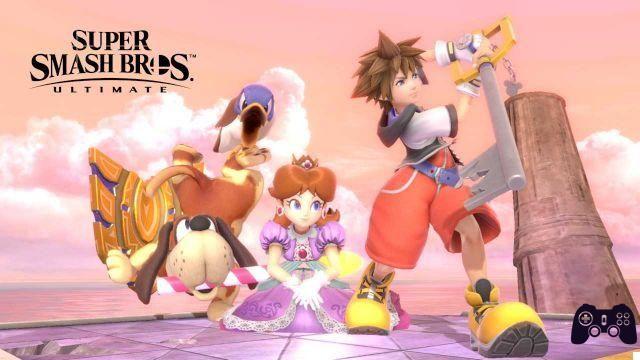
Sora - Super Smash Bros. Ultimate Character Guide
The last of the characters that we will see in our guide has long been an impossible dream for all lovers of both Kingdom Hearts that of Super Smash Bros. Ultimate. Fortunately for them, including this writer, it was Sora to conclude the roster, ironically closing this door for all the time that will separate us from the next chapter of the saga. Sora crosses the blurred boundary between a videogame character, a prerogative to join the cast of the game, and a "stranger" to the sector, adding to the long list of copyright holders the almost unthinkable name of Disney.
- Availability: Sora is available with the scenario The Dark Fortress (image) for six euros. When purchased in bulk in the Fighters Pass vol. 2 which also contains Min Min, Steve, Sephiroth, Pyra, Mythra and Kazuya, the total cost of 30 € allows you to save one euro for each fighter.
- Franchise of origin: Kingdom Hearts
- Origins: It will be hard to summarize the premise of the franchise in a few lines, but we'll try anyway. In a universe where an ancient order of knights collapsed in the conflict between light and darkness, their power has fallen into the hands of a boy who is completely oblivious to his messianic role. Such power, the Keyblade, consists both in the possibility of wielding a sword with magical gifts and, above all, in dominating light or darkness. At fourteen, Sora found himself in a refugee land called Città di Mezzo following the destruction of his island, separating him from friends Riku e Kairi. Smash makes no mention of it, but in his quest Sora has been helped on several occasions by a royal knight, Pippo, and by a court magician, Paperino. In their company (but also without: Smash is not Sora's only solo adventure), the boy has saved countless worlds taken from the imaginary Disney and not, justifying their division by treating them as separate planets.
- Gameplay: Sora behaves exactly like in his home series. Like any Keyblade holder, the law of gravity is more of a guideline for him. This is his double-edged sword: Sora is as agile as he is fragile. His attack on the ground (A, ↔ + A) and in the air (A,> + A) is the famous three-hit combo. Magic (B) replicates the command menu from Birth By Sleep and Re: Coded next to its icon, alternating automatically Firaga (can be used repeatedly by pressing B several times), Thundaga (a three-bolt discharge with excellent throwing power) e Blizzaga (a short range freeze attack, great for breaking shields). Sonic crossing (↔ + B) is directional like the Devil Blaster, and in proximity to enemies it hits them up to three times automatically without aiming. The move can be dangerous near edges if you are not using it to re-enter the field. Flying turbine (↑ + B) works similar to Link's spin attack, but cannot be used on the ground (automatically raises Sora). The Counterattack di Sora (↓ + B) is mostly used with frontal attacks, and does not reflect bullets (but just strengthens them, to the detriment of whoever is behind Sora). The move otherwise works like any other counterattack.
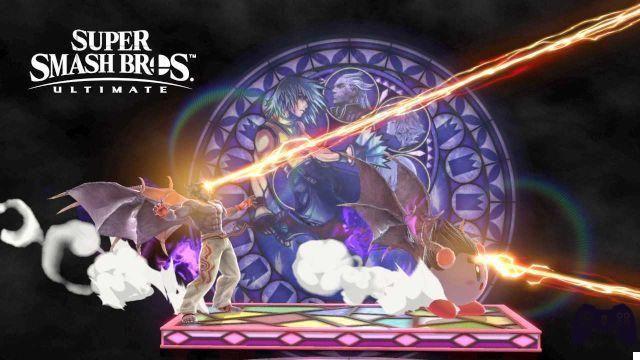
Concluding details, seventeenth episode: the special directional attacks
We wrap up our Super Smash Bros. Ultimate character guide on a big scale, aimed more at beginners than seasoned players (but we'll flesh it out in the future), with a tip on special directional attacks. Some moves, in fact, even after the primary input (B, B + directions) allow you to use the analog lever again. You saw it today with Kazuya's Devil Blaster (image) and Sora's Sonic Crossing. In reality, however, we have also talked about it in the past with the Quick Attack of Pikachu, the special attack on the top of Fox and Falco and with other fighters. You will have to prove versatility with your left thumb.
You can practice in the mode Training and slow down time, even making it scroll one frame at a time to refine all your techniques. The most suitable characters to train are just Fox and Falco. Try to initiate their move with ↑ + B (even on the ground), and as they charge the shot tilt the lever in the direction you want to move. And if you want to raise the bar, try Pikachu. Get used to considering the inputs necessary to perform a move as if the B key and the eventual direction were one. True steering comes only an instant after the move has started (for Kazuya: B, and immediately after ↑ to aim high or ↓ to aim low).
That's all for the numbered episodes of the guide: how did you feel? Are there any other techniques you would like to explore in a separate special? Please let us know by leaving us a comment below, and as always don't forget to stay on Holygamerz for all the most important news for gamers and more. For your purely gaming needs, you can instead find the best discounts in digital format on Instant Gaming.




